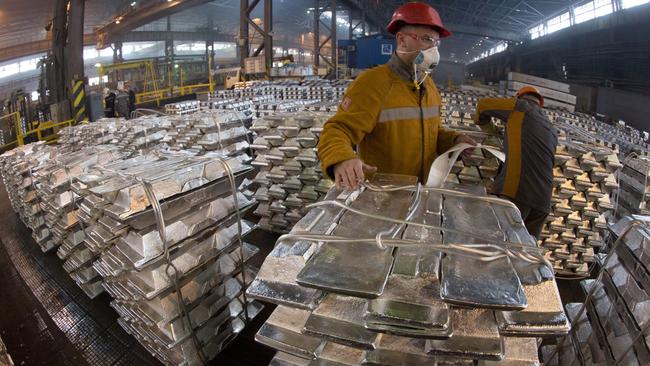Rio Tinto may close NZ aluminium smelter
Rio Tinto is considering closing an unprofitable NZ smelter after aluminium prices plunged.

Rio Tinto has signalled it is prepared to play hardball in its pursuit of lower power prices for its loss-making aluminium operations, putting the New Zealand government on notice it is prepared to shutter its Tiwai Point smelter over a power price dispute.
Rio said on Wednesday it had launched a strategic review of options Tiwai Point, the only aluminium smelter in New Zealand and the nation’s biggest single electricity user, consuming about 12 per cent of the country’s total power.
Options to be considered include partial curtailment of output or complete closure, a decision that would cost about 900 jobs.
“Rio Tinto intends to hold discussions with the government of New Zealand and energy providers to explore options and identify economically viable solutions to find a pathway to profitability for the asset,” the company said.
The decision comes amid a gloomy outlook for aluminium smelters across the world from falling prices and dismal economic growth prospects after extended trade tensions between the US and China.
Aluminium giant Alcoa recently launched a review of its marginal operations, targeting Victoria’s Portland smelter along with facilities in Brazil, Canada, and three of Alcoa’s US assets.
Rio Tinto has also ramped up its rhetoric on energy costs in Australia, with Rio boss Jean-Sebastien Jacques telling reporters they were on “thin ice” at the company’s August half-year financial report, calling for government intervention to fix rising east coast power prices.
The company has since confirmed it is in ongoing talks with both governments and power utilities over the future of its Australian smelters, also believed to be marginal at current commodity prices, which have plunged 30 per cent since the beginning of 2019.
Rio’s move in New Zealand is unlikely to win it new friends in the government of Labour’s Jacinda Ardern, who reopened a production line at the plant in December 2018 amid much fanfare over a $US4.4m ($6.4m) investment to upgrade and restart the potline, closed in 2012 amid low aluminium prices.
Rio has blamed power prices for the latest threat to Tiwai Point, but at the time it said the reopening was made possible by a sweetheart deal with New Zealand’s Meridian Energy in 2018, which reportedly sees the smelter pay lower prices than other industrial users on the country’s South Island, in an arrangement designed to keep the plant profitable until 2022.
The facility, 79.4 per cent owned by Rio Tinto and 20.6 per cent owned by Japan’s Sumitomo Chemical Company, employs about 900 people and is powered largely from hydro-electricity, making it a comparatively low carbon emission facility.
Transmission costs are the heart of the latest dispute, with Rio complaining it pays amongst the highest power and transmission tariffs for a smelter anywhere in the world.
Rio complains it is paying the price for the build-out of power infrastructure on New Zealand’s North Island since 2004, under a policy in which users pay the same transmission rates across the country, rather than a tariff based on actual costs.
While the review is likely to be completed by the end of March 2020, Rio is required to give Meridian 12 month’s notice of any plans to terminate or vary its power contract, according to commentary issued by S&P Global Ratings analysts on Wednesday.
New Zealand Aluminium Smelters (NZAS) chief executive Stew Hamilton told reporters the plant’s position was “quite serious”, despite the joint-venture booking a respectable $NZ220m ($205.7m) profit in 2018, because of the sharp fall in aluminium prices.
Aluminium traded on the London Metals Exchange was worth about $US2000 a tonne a year ago, and last closed at $US1719/t.
Rio Tinto closed up 37c to $89.80 on Wednesday.



To join the conversation, please log in. Don't have an account? Register
Join the conversation, you are commenting as Logout